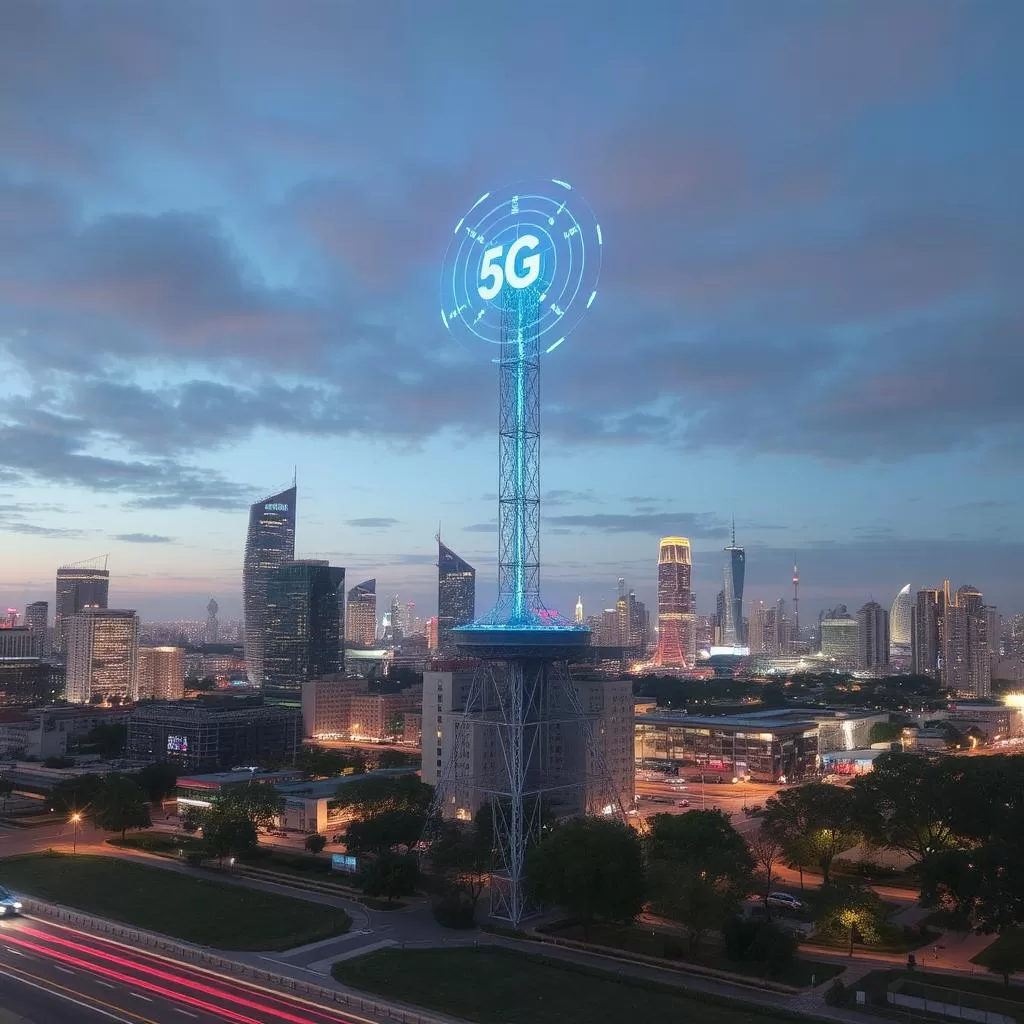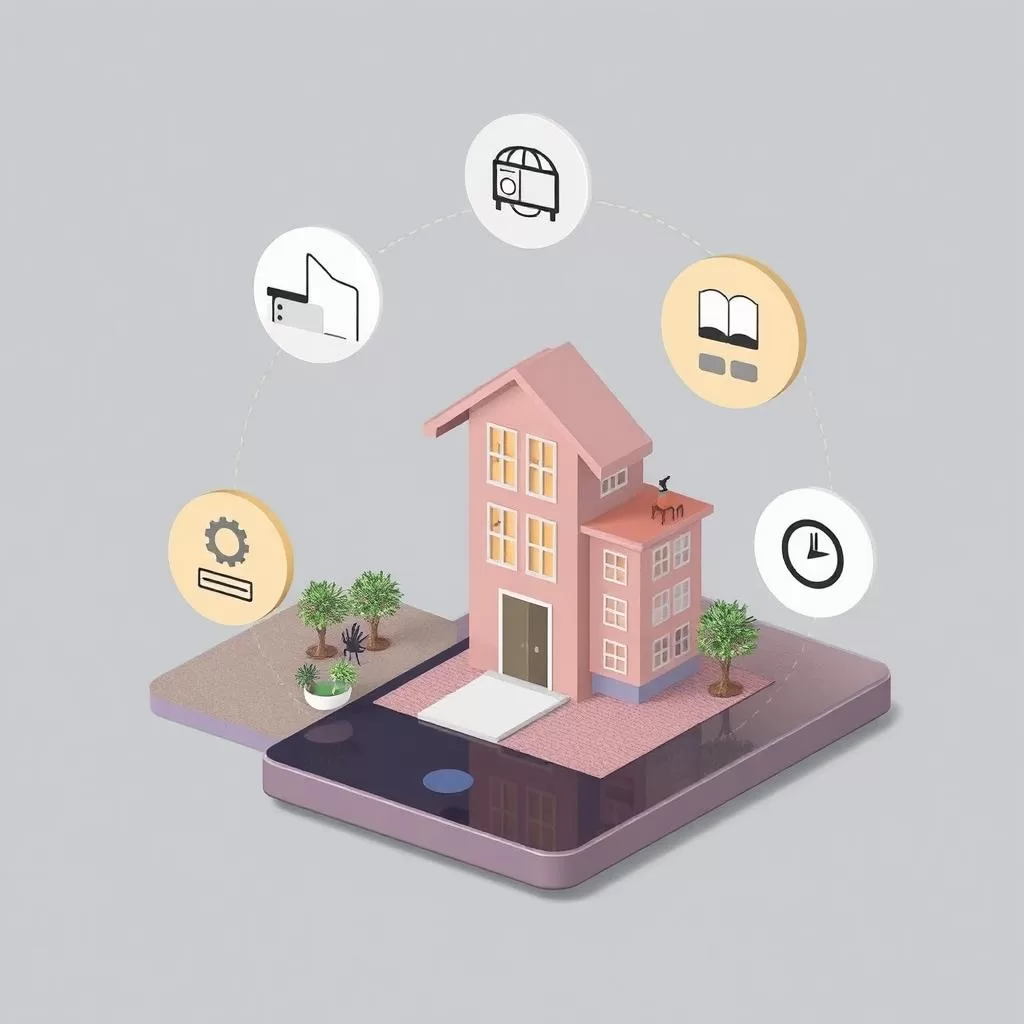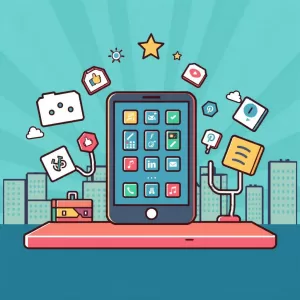5G Technology in 2025: How It’s Transforming Industries
5G technology is more than just faster internet—it’s revolutionizing industries, smart cities, and connected devices in 2025. As 5G networks expand globally, businesses and consumers will experience ultra-fast speeds, low latency, and new technological innovations.
But how exactly is 5G changing the world, and what can we expect in 2025?
What You’ll Learn in This Article:
✅ How 5G works and why it’s better than 4G
✅ The industries being transformed by 5G
✅ Future trends in 5G and beyond
What is 5G and How Does It Work?
5G (fifth-generation wireless technology) is the latest advancement in mobile networking.
Key Features of 5G:
- Faster Speeds – First of all, 5G delivers speeds up to 10 Gbps, making it 100 times faster than 4G.
- Lower Latency – In addition, it offers ultra-low latency of just 1 millisecond, ensuring almost instant responses.
- More Device Connections – Moreover, 5G can support up to a million IoT devices per square kilometer without slowing down.
- Improved Reliability – Finally, 5G reduces network congestion, enabling consistent and seamless connectivity even in crowded areas.
💡 For example, with 5G, downloading a full HD movie takes seconds instead of minutes.
🔗 Related: The Rise of Edge Computing
How 5G Technology is Transforming Industries in 2025
1. Smart Cities & Infrastructure
5G allows real-time data sharing, helping cities become smarter, safer, and more efficient.
- Traffic Management – Smart traffic lights use AI and 5G to ease congestion and keep vehicles moving smoothly.
- Public Safety – Drones connected to 5G can monitor emergencies and send live updates to responders in real time.
- Smart Utilities – Sensors track electricity and water usage, helping cities save energy and reduce waste.
💡 For example, South Korea’s 5G-powered smart city project improves transportation and energy efficiency.
2. 5G enabled Healthcare & Remote Surgery Technology in 2025
5G enables faster, real-time communication between doctors and patients, transforming how healthcare is delivered and accessed.
- Telemedicine – First of all, 5G allows high-definition video calls with no lag. This ensures smooth and clear doctor-patient consultations.
- Remote Surgery – In addition, surgeons can perform delicate procedures using robot-assisted tools, thanks to 5G’s low latency and reliability.
- Wearable Health Devices – Furthermore, 5G supports continuous monitoring of vital signs through smartwatches and other wearable devices. Doctors get real-time updates.
💡 For example, in China, a doctor successfully performed a 5G-powered remote surgery on a patient over 3,000 km away.
3. Autonomous Vehicles & Smart Transportation
5G enhances self-driving cars and vehicle-to-vehicle (V2V) communication, making transportation smarter, faster, and safer.
- Real-Time Navigation – First, 5G provides faster GPS updates. This helps self-driving systems respond instantly to changing road conditions.
- Connected Cars – Additionally, vehicles can now talk to traffic lights, road sensors, and other cars, improving overall traffic coordination.
- Enhanced Road Safety – Most importantly, AI-powered systems use 5G to detect hazards early and help prevent accidents before they happen.
💡 For Example, Tesla, BMW, and Ford are integrating 5G-enabled vehicle networks.
4. Gaming & Virtual Reality (VR/AR)
5G is transforming cloud gaming, augmented reality (AR), and virtual reality (VR), creating smoother, more immersive digital experiences.
- Cloud Gaming – To start, 5G removes the need for powerful consoles. Games stream directly from the cloud with minimal delay.
- Immersive VR Experiences – In addition, VR apps now run in high resolution with no lag, making virtual worlds feel incredibly real.
- AR in Retail – Meanwhile, 5G allows customers to try on clothes and accessories virtually, improving online shopping experiences.
💡 For example, Microsoft’s HoloLens 5G allows real-time AR collaboration for engineers and doctors.
🔗 Related: AI and the Future of Virtual Reality
5. Industrial Automation & Manufacturing
5G is powering Industry 4.0, where AI, robotics, and automation are reshaping how factories and supply chains operate.
- Real-Time Monitoring – First, smart factories use 5G to detect problems instantly and adjust systems before downtime occurs.
- AI-Driven Automation – Additionally, machines now communicate directly with each other, reducing the need for human involvement on the floor.
- Supply Chain Optimization – Finally, 5G enables real-time tracking of goods, helping businesses manage inventory and deliveries more efficiently.
💡 For example, Siemens and Bosch use 5G-enabled robots to improve factory efficiency.
The Future of 5G Technology: What to Expect in 2025
1. 5G & AI Integration
5G networks will power AI-driven applications, enabling systems to make real-time decisions faster and more accurately than ever before. With ultra-low latency and lightning-fast speeds, 5G acts as the backbone for smart, connected technologies.
✔ Smart Home Automation – To begin with, AI-powered assistants like Alexa or Google Home will become far more responsive. With 5G, they can instantly control lights, thermostats, security systems, and appliances. This makes everyday living more seamless and energy-efficient.
✔ Autonomous Drones – In addition, drones connected through 5G can perform tasks like surveillance, deliveries, and infrastructure inspections in real time. They respond instantly to changing environments and transmit HD video and sensor data without delay.
✔ AI-Powered Financial Transactions – Furthermore, fintech platforms can use AI over 5G to detect fraud and approve transactions in seconds. This improves security while providing a smoother experience for users, especially in high-volume, real-time trading environments.
2. 5G in Space: Satellite-Based Connectivity Technology in 2025
Companies like Starlink and Amazon Kuiper are launching 5G satellites to provide fast, reliable internet anywhere on Earth. These satellite networks are expanding global connectivity and closing the digital divide.
✔ Global Internet Access – To start, 5G satellites bring high-speed internet to remote regions and underserved communities. Places without cables or towers can now go online with ease. This helps improve access to education, healthcare, and job opportunities.
✔ Disaster Recovery Communications – In addition, satellite-based 5G ensures stable communication during and after natural disasters. Even when ground networks are down, emergency teams can stay connected and coordinate faster.
✔ Better Inflight WiFi – Finally, 5G satellites are revolutionizing air travel by offering fast, uninterrupted WiFi in the sky. Passengers can stream, browse, or work mid-flight just like they would on the ground.
💡 For example, Elon Musk’s Starlink project is testing 5G-compatible satellite broadband.
3. 6G: The Next Generation of Connectivity
By 2030, researchers predict the launch of 6G networks, which will bring speeds of up to 1 terabit per second. These networks will revolutionize how we communicate, work, and interact with technology, pushing the boundaries of what’s possible.
✔ Holographic Communications – First, 6G will enable real-time 3D video calls, making virtual meetings feel like face-to-face conversations. With ultra-high speeds, people will no longer be limited to flat screens or static images—holographic communication will change everything.
✔ AI-Driven Connectivity – In addition, 6G will leverage artificial intelligence to create self-learning networks. These networks will continuously analyze and optimize data transmission, ensuring faster and more efficient connections, even in crowded or remote areas.
✔ Brain-Computer Interfaces – Most exciting of all, 6G may enable direct communication between humans and devices through brain-computer interfaces. This will allow individuals to control technology just by thinking, opening up a whole new world of possibilities for accessibility, gaming, and even medical treatments.
💡 For example, China and the U.S. are already investing in 6G research.
Challenges of 5G Implementation
While 5G brings incredible advancements, its implementation comes with several challenges that need careful consideration.
🚧 High Infrastructure Costs – First, building the necessary infrastructure for 5G is expensive. It requires new cell towers, fiber-optic networks, and upgrades to existing systems. These investments are essential but come with a high price tag, particularly in remote or less developed areas.
🚧 Cybersecurity Risks – In addition, the massive increase in connected devices introduces greater risks of cyberattacks. With more data being transferred and stored, hackers have more opportunities to exploit vulnerabilities. Ensuring robust security measures will be crucial for protecting user privacy and preventing cybercrimes.
🚧 Health Concerns – There are ongoing debates about the potential health effects of 5G radiation. Although studies are still in progress, some individuals worry about potential risks from long-term exposure to higher frequencies used in 5G networks. It’s important for research to continue in order to address these concerns and reassure the public.
🚧 Global Rollout Delays – Finally, the rollout of 5G is not uniform across the globe. Some countries face regulatory challenges, lack of infrastructure, or political barriers that delay the widespread availability of 5G. These delays hinder the ability of certain regions to fully benefit from 5G advancements.
💡 For example, some regions have limited 5G coverage due to high implementation costs.
How to Prepare for the 5G Revolution
🔹 Businesses Should do the following:
To fully leverage the benefits of 5G, businesses should take proactive steps to ensure they are prepared for the changes and opportunities ahead.
✔ Upgrade IT Infrastructure – First and foremost, businesses need to upgrade their IT infrastructure. This means preparing for cloud-based solutions and AI-powered applications, which will run more efficiently with 5G’s high speeds and low latency. Investing in scalable, flexible systems will ensure long-term success.
✔ Invest in Cybersecurity – In addition, businesses must prioritize cybersecurity to protect against 5G-related threats. As more devices become interconnected, networks become more vulnerable to cyberattacks. Strengthening firewalls, encryption, and monitoring systems is crucial to keeping sensitive data safe from malicious actors.
✔ Adopt 5G IoT Solutions – Furthermore, companies should embrace 5G-powered IoT solutions. By integrating smart sensors and automation, businesses can streamline operations, improve efficiency, and gather valuable real-time data. This will enable smarter decision-making and enhanced customer experiences.
🔹 Consumers Should Do the following:
As 5G technology continues to roll out, consumers can take specific steps to make the most of its benefits while staying secure and prepared for the future.
✔ Upgrade to 5G Devices – First, consumers should consider upgrading to 5G-compatible smartphones and gadgets. This will future-proof their devices, allowing them to enjoy faster speeds and access to the latest 5G-powered features as they become available.
✔ Be Aware of Cybersecurity Risks – In addition, it’s important for consumers to be mindful of cybersecurity risks. As more devices connect to 5G networks, using VPNs and secure connections will help protect personal data from potential threats and cyberattacks.
✔ Explore 5G-Powered Applications – Finally, consumers should explore the world of 5G-powered applications. With enhanced speeds, 5G enables exciting new experiences like augmented reality (AR), virtual reality (VR), and seamless cloud gaming. These applications will unlock immersive, real-time digital interactions.
Conclusion: 5G Technology is Changing the World in 2025
As 5G technology continues to roll out, it promises to transform the way we connect, communicate, and experience the world around us. Consumers who take proactive steps now can fully embrace these advancements and stay ahead of the curve. By upgrading to 5G-compatible devices, individuals can ensure they are equipped to take full advantage of faster speeds, lower latency, and the exciting possibilities 5G offers. This future-proofing is essential as the technology becomes more integrated into daily life.
Equally important is staying aware of the cybersecurity risks that come with a more connected world. As more devices join the 5G network, ensuring online safety becomes a critical priority. Using VPNs, secure connections, and adopting strong security practices will safeguard personal data from the potential threats that emerge in this new landscape. Being mindful of these risks now will ensure peace of mind as the 5G era unfolds.
Lastly, consumers should actively explore the wealth of 5G-powered applications that will redefine entertainment, business, and personal interaction. From immersive augmented and virtual reality experiences to seamless cloud gaming, 5G opens doors to innovations that were once only imagined. As 5G continues to roll out, embracing these new technologies will unlock experiences that are faster, more responsive, and incredibly exciting.
If you’re looking to navigate the complexities of this evolving technology and ensure your business is ready for 5G and beyond, Teknikali Tech is here to help. Our ICT Consultancy Services offer expert guidance on how to integrate 5G solutions into your operations, boost cybersecurity, and explore new, game-changing opportunities in the digital world.
Key Takeaways of 5G technology in 2025:
✅ 5G is 100x faster than 4G and enables ultra-low latency applications – 5G will drastically outperform 4G, delivering speeds up to 100 times faster. This means faster downloads, smoother streaming, and the ability to run applications that require near-instantaneous response times, such as augmented and virtual reality. The ultra-low latency will make real-time communication and interaction seamless across various sectors.
✅ Industries like healthcare, transportation, and smart cities will benefit the most – Sectors that rely on rapid, real-time data exchange will see the most significant impact. In healthcare, 5G will enable telemedicine, remote surgery, and continuous health monitoring. In transportation, self-driving cars and real-time navigation will become safer and more efficient. Additionally, smart cities will harness 5G to improve traffic management, public safety, and utility optimization, making urban living more efficient and sustainable.
✅ Future trends include AI-powered 5G, satellite internet, and the rise of 6G – Looking ahead, AI integration with 5G will lead to smarter, self-optimizing networks that can dynamically manage data flows. Satellite internet, powered by companies like Starlink, will provide high-speed internet to even the most remote corners of the globe. And beyond 5G, the rise of 6G networks by 2030 will usher in even faster speeds, holographic communication, and brain-computer interfaces, transforming how we connect and communicate.
💬 How do you think 5G will change daily life? Share your thoughts in the comments!
Share this content:







2 comments